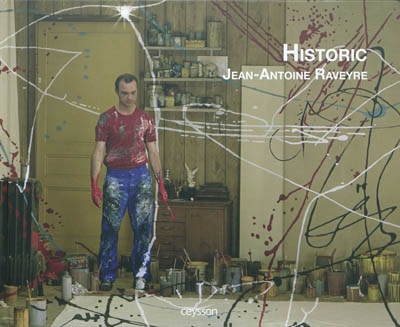en savoir plus

Carte fidélité
Permet à tous ses détenteurs d'obtenir 5% de réduction sur tous les livres lors du retrait en magasin (réduction non cumulable avec les réductions de type étudiant).
Offre également un certain nombre d'avantages auprès de nos partenaires.
Wishlist
Avec les favoris, retrouvez dans un espace les sélections effectuées au fur et à mesure de vos navigations dans le site.
Constituez pour votre usage personnel vos listes de livres en prévisions d'achats futurs et votre sélection d'articles, dossiers, événements, vidéos ou podcasts préférés ou à découvrir plus tard...
Il suffit simplement de cliquer sur "Ajout Favori" sur chaque page qui vous intéresse pour les retrouver ensuite dans votre espace personnel.
Requiert un compte Mollat
Mes Alertes
Requiert un compte Mollat
Historic, Jean-Antoine Raveyre : photography
en savoir plus
Résumé
A l'occasion de l'exposition présentée au VOG, cet album décline les photographies réalisées par l'artiste en référence aux nombreux peintres qui l'inspirent (Manet, Le Caravage ou Van Gogh). ©Electre 2024
Lire la Quatrième de couverture
Réduire la Quatrième de couverture
Essay by Alexis Jakubowicz
Raveyre, Flash-Forward
The pictures Raveyre took after 2009 are in line with Michael Fried's project Contre la théâtralité : Du minimalisme à la photographie contemporaine. The inaugural work of Raveyre's modernism, if one may call it that way, is a tribute to Jackson Pollock's art, also celebrated by Clement Greenberg and Michael Fried. With The End (2009), used as the book cover, the photographer shows that he can meet the requirements of frontality in a Euclidean space. Rosalind Krauss suggested that the flatness in Pollock's paintings was a result of the interlacing lines denying the relation between the figure and the content and preventing the corporeal projection of the spectator. Krauss believes that Pollock's paintings convey literal impenetrability. Jean-Antoine Raveyre produces the same effect by taking dripping in the depth of a setting. It is almost impossible to figure out that the drips of paint in The End are really painted in three dimensions. The photographer could have obtained the same result by projecting the paint on a glass plate, and photographed the scene through the glass plate. But he did net, because he is a virtuoso, blocking the spectator's look in the conditions required by Modernism, while solving frontality in space with however four meticulous exceptions : the projections, if one looks closer, are behind the character, the globe on the shelf on the left, the skull, and the key on the right. These suspended objects challenge Greenberg's theory that leaves out in principle the meeting of arts. For Greenberg, who sought to define kitsch, Painting and Sculpture must be based on specific qualities - flatness for Painting, and volume for Sculpture. With The End, not only does Raveyre introduce Painting in the space of Sculpture, but he does it with a photographic intention. He contravenes the prescriptions of Modernism white reproducing its effects.
Fiche Technique
Paru le : 23/09/2011
Thématique : Ecrits sur la photographie
Auteur(s) : Non précisé.
Éditeur(s) :
Ceysson-Editions d'Art
Collection(s) : Non précisé.
Contributeur(s) : Auteur : Alexis Jakubowicz - Préfacier : Yannick Boulard - Préfacier : Marielle Bouchard
Série(s) : Non précisé.
ISBN : 978-2-916373-51-5
EAN13 : 9782916373515
Reliure : Relié
Pages : 76
Hauteur: 24.0 cm / Largeur 30.0 cm
Épaisseur: 1.0 cm
Poids: 730 g
